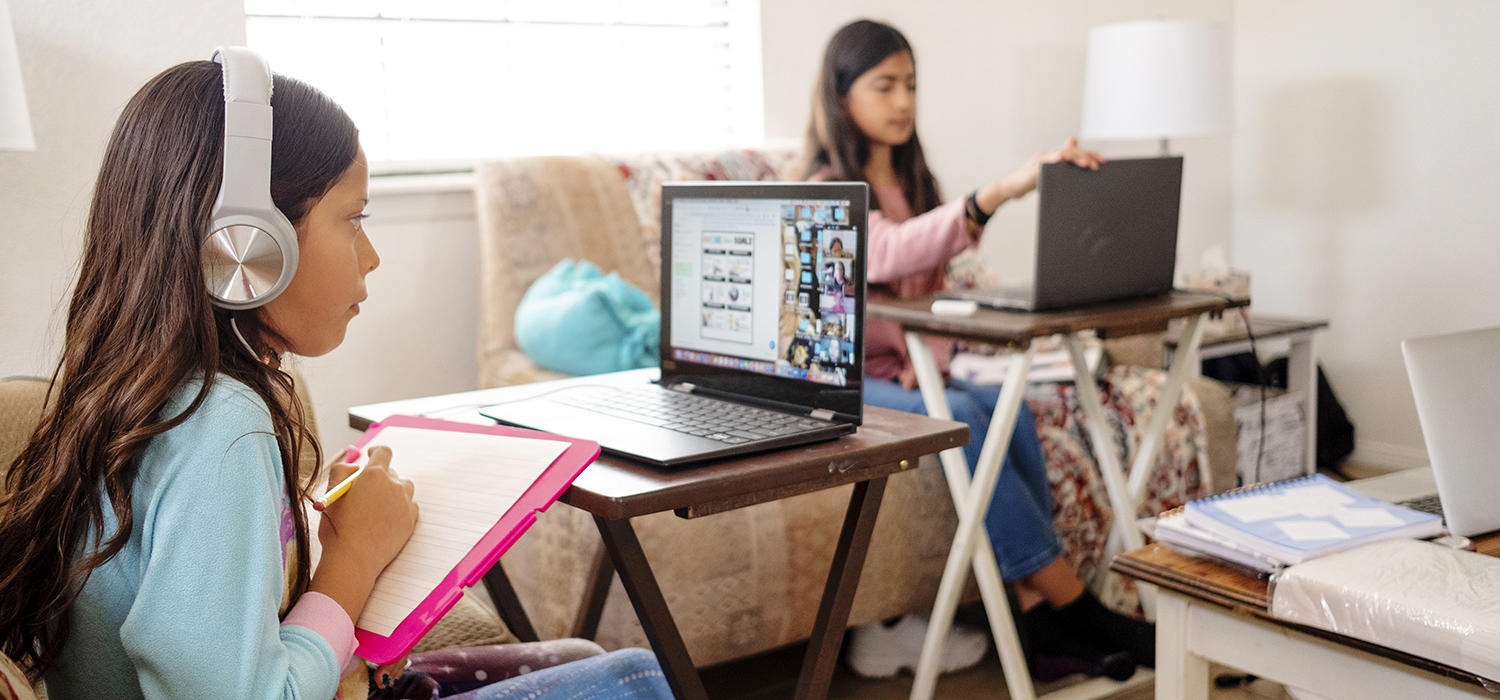
RIA BHANDARKAR – OCTOBER 20TH, 2020
EDITOR: CHAZEL HAKIM
The coronavirus pandemic has forced people from all stages of life to transition to a more digital world. Although some groups of people have adjusted with few complications, it is America’s youngest population who may be suffering the most. A recent report from the Organisation for Economic Co-operation and Development revealed that recent efforts to move students to remote learning have not been sufficient to make up for the lack of class time and personalized attention. At best, remote learning will delay students’ abilities to learn critical skills on the same timeline as previous generations. At worst, it would amplify the already massive achievement gap between higher income, majority-white communities and lower income, minority ones while also creating a GDP decline that could last for decades.
While many of these consequences are inevitable, their magnitude is not. There is still time to push back against the current disastrous forecast by investing more in technology to standardize curriculum around the country. However, US education spending is decreasing, and the benefits of new technology are concentrated within more affluent school districts and private schools. The best recommendations to help education right now can’t be experienced by a large number of American students, which means that preventing future calamity requires reorienting the entire education system. Right now, the United States is doing the opposite.
Education’s Effect on the Economy
The coronavirus has manifested one of the worst recessions in American history, and the government’s current response to the disruption in its public education system won’t make the transition back to normalcy any easier. Although most students are still back in school, their curriculums are being cut in half and school days are being shortened. This can lead to a loss of skills which will impact the nation’s long-term productivity.
On an individual level, students who take an abbreviated year of school could lose a chance to develop competency in areas that are built on in later years, lowering the chances that the average student would seek higher education, especially in technical fields. That could increase unemployment and decrease innovation in the long-term, meaning that the projected GDP loss would not be ameliorated in the near future.
According to the OECD, even if students this year lose only a tenth of a standard deviation of academic ability, the United States could face a 1.5% loss in GDP, even if later classes return to previous skill levels. That 1.5% baseline would amount to a $15.3 trillion loss.
The US Diverts Funds
Despite this educational crisis, the United States has so far demonstrated that its priorities are not aligned with students. Although it is still too early to see the long-term plan for education, the OECD predicts that most funding will be diverted to either public health or the economy.
Governments decreasing education funding is not uncommon in a time of economic instability. In fact, the United States originally increased education funding in 2008 and 2009 before reducing it in 2010. Current forecasts suggest that education budgets will continue to decrease in the 2020s as public revenues decline, according to the World Bank Group.
The United States’ main initiative in education funding so far has been the elementary and secondary school emergency relief aid provided through the CARES Act. At the same time, however, Secretary of Education Betsy DeVos chose to give private schools a disproportionate amount of aid. These measures exemplify the contradictory response the Department of Education has shown this past year.
The Most Vulnerable Suffer the Most
For all of the drawbacks mentioned above, some students will face little to no impairment during the crisis. School districts with excess funding and access to technology can more easily transition students to online school. Likewise, students who go to these schools can most likely afford tutors, subscriptions to education websites, and extra materials. Some very wealthy families have even created small learning pods to provide their children with some routine.
But students in poorer areas with larger minority populations could have their educational experiences upended. Majority white districts receive about $23 billion more in funding than majority non-white districts. Since most public school funding comes from local property taxes, this funding gap is at the foundation of the American education system.
The achievement gap is more than an impediment to students on an individual level. It slows economic growth and burdens governments and economies on a macro level. In 2009, McKinsey estimated that if the achievement gap between Black and Hispanic students and their white counterparts had been closed, US GDP would have been $426 to $705 billion higher. Furthermore, if the income achievement gap had also closed, US GDP would have been $332 to $550 billion higher.
The American achievement gap can only worsen during this time, and some students may not be able to recover from the recent disturbance to their education. The loss of revenue for states and towns during the pandemic won’t be made up for in the near future. For example, New York state is expected to lose $62 billion over the next four years. Even emergency funds being set aside for education haven’t been used to the fullest extent, with Governor Andrew Cuomo being accused of withholding funds.
Not Every Response Is Equal
Areas that are affected the most by the achievement gap are unsurprisingly struggling. While no school district is “back-to-normal,” some have been more successful in creating plans to continue on with the 2020-21 school year. These responses vary from district to district, and in some cases from state to state.
In fact, 28 states delayed re-opening for weeks beyond the standard first day of school, leading to nearly half of all American K-12 students unsure of when they’d receive instruction. Although starting later in the year may seem insignificant, it indicates that half of American students are attending school in districts which are figuring out their approach as the year progresses, creating more disorder in their learning environment and decreasing the chances that their teachers will be prepared for their new conditions.
And the resources for students to adjust to education during an epidemic are not distributed equally. According to data from Curriculum Associates, only 60% of low-income students were participating in digital instruction at the end of the 2020 school year while 90% of higher income students were. Unequal access to devices and Internet access could be the main factors, but students in higher income districts are also more likely to receive a more organized solution from their school administration.
Remote learning will lead to lifelong disadvantages for students in conflicting situations. The average K-12 students in the United States could lose between $61 and $82 thousand in lifetime earnings, equivalent to more than a full year’s average salary. For Black and Hispanic Americans, that number is even more dire; they are expected to earn about $1 thousand a year less over their lifetimes than white students due to the pandemic.
Schools closing could also decrease the chance that students continue their education. It is expected that drop-out rates will decrease by 6.5 percent for Hispanic students, 5.5 percent for Black students, and 3.9 percent for White students.
Accessibility is Key
The most obvious solution is an investment in technological solutions, specifically one which can bring students together without having to physically be in the same area. According to CNBC, the coronavirus epidemic has sparked an increase in investments and innovation in education technology. The market is projected to increase from $107 billion in 2015 to $350 billion in 2025. The recent reliance on remote learning has encouraged school districts to look into web-based learning initiatives. School administrators are expected to increase spending on education-related technology by 12%.
Still, education software depends on students having existing devices. According to Education Week, 64% of district leaders who worked in majority low-income areas stated that the lack of technology access would harm their ability to teach remotely. In fact, one-third of Black, Latino and Indigenous families do not have the high-speed Internet access required for online learning. Higher poverty schools are also less likely to track attendance or offer live instruction, meaning that students could be completely checked out of learning.
The Yale School of Medicine concurs that stronger investment in technology and increased support for families are necessary to minimize the effects of COVID on education. Unfortunately, neither seems likely in the current state of education.
Conclusion
Current initiatives to transition to remote learning will serve some students as well, or even better, than in-person schooling. However, for millions of students across the country, online learning will be equivalent to an extended vacation. And even after this pandemic ends, the loss of skills during this time period will harm these students’ abilities to find educational and employment opportunities as adults.
Transitioning to remote learning means providing students with a completely different set of resources from normal. However, those investments will not be easy for districts struggling to accommodate their students’ lack of access to technology. An entire generation of lower income and minority students may face increased difficulty when it comes to entering the workforce or pursuing higher education. That costs the government since the number of citizens requiring welfare would decrease while innovation would increase.
The clear solution would be to increase funding for those districts so they can provide devices for students and training for teachers. The United States has shown no signs of moving toward more equitable funding. Until that path is reversed, it’s unlikely that the country can avoid a massive increase in poverty and structural inequality.
Featured Image Source: Urban Wire
Disclaimer: The views published in this journal are those of the individual authors or speakers and do not necessarily reflect the position or policy of Berkeley Economic Review staff, the Undergraduate Economics Association, the UC Berkeley Economics Department and faculty, or the University of California, Berkeley in general.


